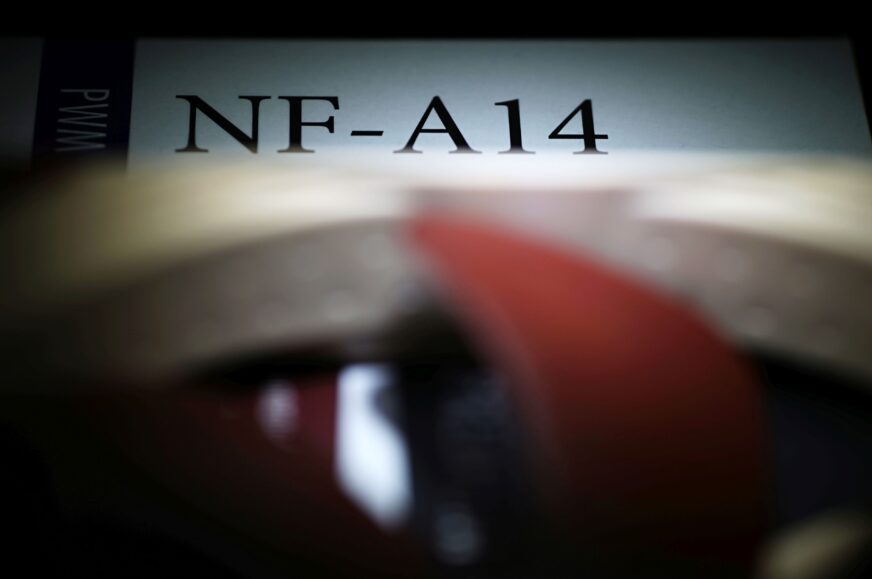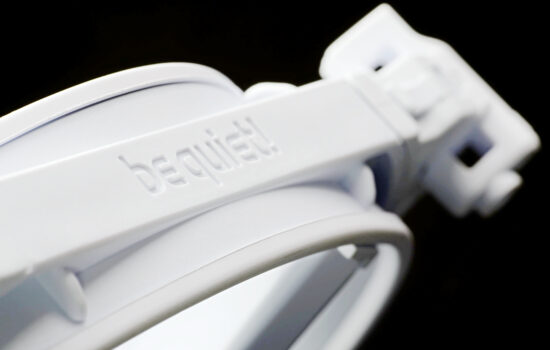Evaluation
There aren’t many 140mm fans that are more popular than the NF-A14 (PWM). This Noctua model has maintained that for a long time, for over a decade. In the meantime, naturally, a host of newer competing solutions have come along, and the question is how Noctua’s still-flagship 140mm fan will hold up against them in the present day. By analyzing the NF-A14, we’ll also shorten a bit the interminable wait for its successor.
Evaluation
Yes, it’s still a fan worth buying. In an obstacle-free, free space, at low speeds (below 700 rpm) in a mode with the same noise level it achieves greater airflow than the Endorfy Fluctus 140 PWM. However, compared to the BeQuiet! Silent Wings Pro 4 (BL099), it always lags behind relatively significantly. This comparison shows that even this design can keep up with the more modern ones, as long as there is an effort to keep the noise level as low as possible, as was once the case with the NF-A14. Of course, the more attractive results of the older Noctua fan are achieved here because of fewer acoustic imperfections than the Fluctus 140 has (it is, after all, a significantly cheaper fan…). But even that one is already usually beaten by the NF-A14 PWM at higher speeds.
In practice, the Noctua A14 PWM more or less often loses on obstacles, but at the same time it has the upper hand over design-wise similar fans from Fractal Design (Aspect 14 and Silent R3). With a nylon dust filter, the gap netween the NF-A14 PWM and the FD Silent R3 140 mm is quite large. And here it is important to point out one more thing. The NF-A14 (PWM) is one of the few fans that don’t interfere with an unreinforced nylon filter. The rotor of most more efficient fans already rubs against their mesh, making them unusable in this situation (in combination with a nylon filter).
However, we also recorded very good, even high-end results with a plastic filter. The Noctua NF-A14 PWM in some modes (and not only in the quietest) ends up even ahead of the Silent Wings Pro 4 of the same format. This is mainly due to the fact that this dust filter adds less noise to the NF-A14 than to the BeQuiet fan! On a hexagonal grille, however, the Noctua fan is already clearly lagging behind, much like on radiators. Too much time has passed since the “ideal for radiator” sticker on the Noctua NF-A14 (PWM) fan packaging, during which the competition has come up with more efficient designs. Sure, it’s still a good fan even for this use, but there are already a variety of more efficient options on the market.
Admittedly, some have a less pleasant acoustic profile, but even the NF-A14 is not perfection in this regard. You won’t hear mechanical noises from the motor or bearings, Noctua has this down to a tee here as well, but again you may be disturbed by noisier tones between 80–130 Hz. The lower the speed, the lower the tone. But the sound of the NF-A14 is always deeper, more rumbling. This is not an isolated issue, and it applies to other fans as well, but the belief that this isn’t an issue with the Noctua NF-A14″ is misguided. Still, it’s fair to note that the BeQuiet! Silent Wings Pro 4 (BL099) fares even worse, this one having stronger rumbling sound frequencies.
The new generation of 140mm fans from Noctua will most certainly have significantly quieter lower frequencies though. Given the materials used and the geometry of the prototypes from Computex 23, this is already predictable, and just like you, we can’t wait to see how far Noctua has taken the psychoacoustic optimizations on these fans.
With the NF-A14 PWM it’s also worth highlighting the super-low vibration. Although their intensity is measurable (i.e. at higher speeds), it is only to a small extent, which is unlikely to contribute particularly to secondary noise of components with which these fans will be in contact. So for someone, the NF-A14 PWM still makes sense, and although these fans are already outperformed in many aspects, they can still be recommended in 2024. How good a choice they will be depends on the specific use case and their particular speed setting. As is always the case with any better fan.
English translation and edit by Jozef Dudáš
| Noctua NF-A14 PWM |
| + Suitable for every use case |
| + Cooling efficiency (airflow/pressure per unit of noise) at a very high level |
| + Sometimes beats even the most efficient 120 mm models as a system fan at low speed |
| + Very high efficiency even with dust filters |
| + Wide speed range |
| + Very low speeds possible (stable from approx. 147 rpm) via PWM |
| + Virtually noiseless operation of bearings and motor |
| + Extremely low, negligible vibrations |
| + Very long service life assumption (time-proven SSO2 bearings) |
| + Generous, premium accessories |
| - The sound is characterised by rumbling frequencies. For some, they may be unpleasant... |
| - … to some extent this is also a consequence of the relatively thin blades |
| Approximate retail price: 26 EUR |
- Contents
- Noctua NF-A14 PWM in detail
- Overview of manufacturer specifications
- Basis of the methodology, the wind tunnel
- Mounting and vibration measurement
- Initial warm-up and speed recording
- Base 6 equal noise levels…
- ... and sound color (frequency characteristic)
- Static pressure measurement…
- … and airflow
- Everything changes with obstacles
- How we measure power draw and motor power
- Measuring the intensity (and power draw) of lighting
- Results: Speed
- Results: Airlow w/o obstacles
- Results: Airflow through a nylon filter
- Results: Airflow through a plastic filter
- Results: Airflow through a hexagonal grille
- Results: Airflow through a thinner radiator
- Results: Airflow through a thicker radiator
- Results: Static pressure w/o obstacles
- Results: Static pressure through a nylon filter
- Results: Static pressure through a plastic filter
- Results: Static pressure through a hexagonal grille
- Results: Static pressure through a thinner radiator
- Results: Static pressure through a thicker radiator
- Results: Static pressure, efficiency depending on orientation
- Reality vs. specifications
- Results: Frequency response of sound w/o obstacles
- Results: Frequency response of sound with a dust filter
- Results: Frequency response of sound with a hexagonal grille
- Results: Frequency response of sound with a radiator
- Results: Vibration, in total (3D vector length)
- Results: Vibration, X-axis
- Results: Vibration, Y-axis
- Results: Vibration, Z-axis
- Results: Power draw (and motor power)
- Results: Cooling performance per watt, airflow
- Results: Cooling performance per watt, static pressure
- Airflow per euro
- Static pressure per euro
- Results: Lighting – LED luminance and power draw
- Results: LED to motor power draw ratio
- Evaluation













Thanks.
I particularly like the minimum fan speed, that’s a must to me.